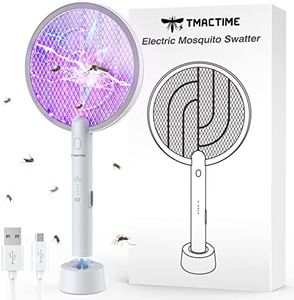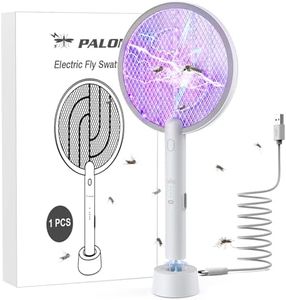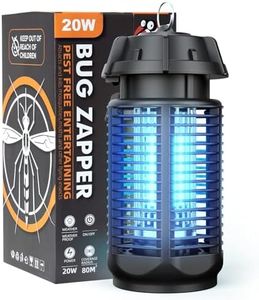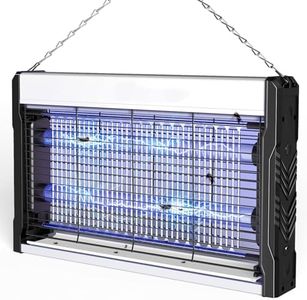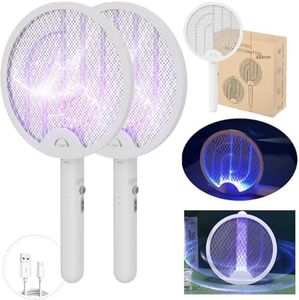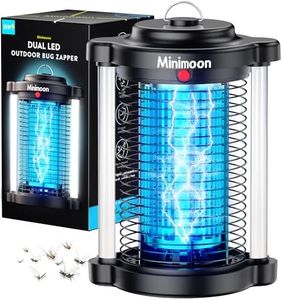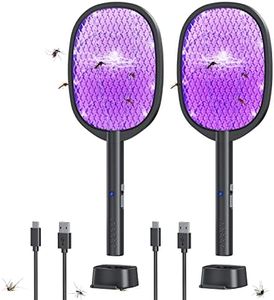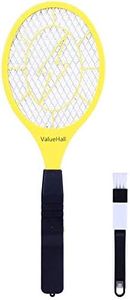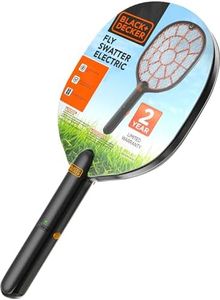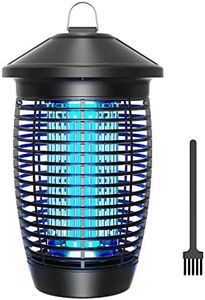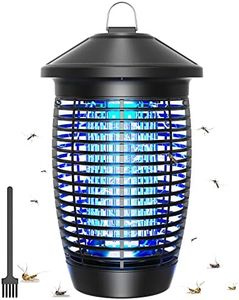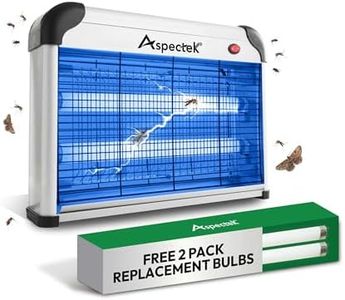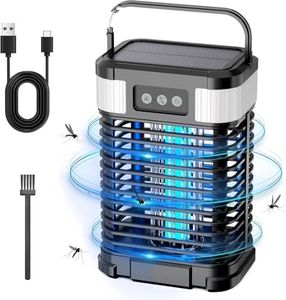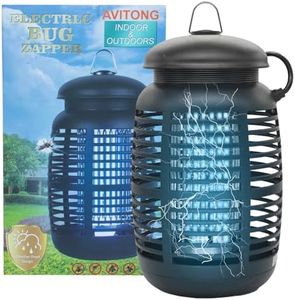We Use CookiesWe use cookies to enhance the security, performance,
functionality and for analytical and promotional activities. By continuing to browse this site you
are agreeing to our privacy policy
10 Best Fly Zappers
From leading brands and best sellers available on the web.By clicking on a link to a third party's website, log data is shared with that third party.
Buying Guide for the Best Fly Zappers
Choosing the right fly zapper can make a noticeable difference in keeping your home, patio, or workplace free from annoying flying insects. Fly zappers work by attracting flies and other bugs with light and then eliminating them using an electric grid. Knowing what to look for helps ensure that you pick a zapper that is effective, safe, and convenient for your space and intended use.Coverage AreaCoverage area tells you how much space the fly zapper can effectively protect from flying insects. It's usually listed in square feet or meters. Small units cover just a single room (up to 200 sq ft), medium units handle slightly larger spaces or bigger rooms (200-1000 sq ft), and large commercial units can protect big open areas (over 1000 sq ft). To pick the right one, consider the size of the area you need protected—match the zapper's range to your room, patio, or outdoor space. If you have multiple rooms or a very large area, you may need more than one device.
Type of AttractantFly zappers usually use UV light to attract bugs, but some also include additional lures like pheromones or scent pads. UV-only models are chemical-free and work well for general use, while zappers with extra attractants can be useful in areas with stubborn or high populations of insects. If you are sensitive to fragrances or want a completely chemical-free solution, stick with UV-only models. If you have a severe bug issue, you might want the added boost of scent or bait.
Safety FeaturesSafety is important, especially if you have children or pets around. Look for features like a protective outer grid or cage to prevent accidental contact with the electric part. Some zappers have built-in safety switches or require a tool to open, adding extra security. For homes with kids or animals, always prioritize models with robust shielding so tiny fingers or paws can't reach the grid.
Ease of CleaningAfter zapping, dead bugs can accumulate and need to be removed. Some zappers feature removable trays or drawers that make cleaning easy, while others may require you to take apart the device. If you want a low-maintenance option, choose a zapper with a slide-out tray or easy-access design. This is particularly important for frequent users or in high-traffic areas where it may be necessary to clean often.
Power SourceFly zappers can be plugged into mains electricity, powered by batteries, or run on USB or solar power. Corded models are more powerful and best for permanent indoor or outdoor installation, while battery-operated and USB/solar models offer more flexibility for camping, picnics, or places without outlets. Think about where and how you’ll use the zapper—choose corded models for stationary use, and go for battery or solar if you move your zapper around or need it outdoors where power is unavailable.
Indoor vs. Outdoor UseSome fly zappers are designed for indoor use only, while others are built to withstand outdoor conditions like rain and sun. Indoor models aren’t weatherproof and are lighter, while outdoor models have sturdier housings and are sealed to keep moisture out. Always match the product to your intended location—for example, an outdoor patio or backyard needs a weather-resistant model, while a kitchen or living room is fine with an indoor-only version.
Noise LevelFly zappers typically make a ‘zap’ sound when an insect is killed. Some are designed to minimize noise, while older or high-voltage units may be noticeably louder. If you’re sensitive to sudden noises or want a zapper for bedrooms or quiet spaces, look for reviews or specs noting quiet operation. For busy shops or loud patios, noise is less of a concern.
